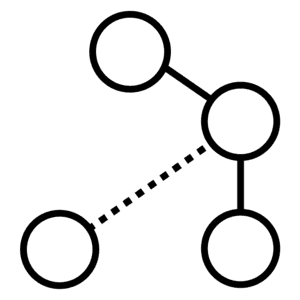10 Principles of Business Innovation Design.
5 min read
Principle 1 • Reframe the Context

Prioritize and scope the right business challenges to solve based on challenges most crucial for survival. Reframe challenges into innovation opportunities by frame-storming different questions posed to find solutions. Reframing ends as means shapes the direction how solutions will be conceived. Refocusing question enables the ability to generate new possibilities that was not thought of before.
Principle 2 • Envision the Future

The key to fulfilling a vision is to align market trends with strategy. While market trends are volatile, uncertain, complex and ambiguous, organizational vision, missions and values must remain unchanged. Anticipate trends and prepare multiple future scenarios how the market is changing towards the vision. Then shape the organization according to scenario plans to fulfill the vision.
Principle 3 • Empathize with Stakeholders

Deep dive into the needs and desires of customers to uncover insights that are essential for innovation. Identify the relationships between direct and indirect stakeholders to gauge causes and effects from the organization. By understanding the frame of reference of stakeholders and their biases, intervention and improvement can be made effectively.
Principle 4 • Synthesize Patterns

Make sense of events by identifying, generating and validating patterns. Future events can be predicted by backtracking the past. Different types of customers can be categorized into personas. Customers' latent needs and desires can be anticipated by making sense of their behavioral patterns. Brand experiences can be sequencing through touchpoints orchestration.
Principle 5 • Connect the Unconnected

Connect disparate things to form new ideas. Cross-pollinate practices from other industries into the organization to break through from status quo. Mimic the proven models, systems, and elements of nature to solve various business challenges. Understand what small steps to undertake to achieve the big picture ecosystem. After all, creativity is making sense of new logic by connecting and unconnected.
Principle 6 • Iterate Rapidly

An organization is a grand experiment operated by validated and unvalidated assumptions. Mitigate risks of failure by identifying and validating assumptions through measurable experiments. Increase probability of successful outcomes by prototyping ideas early and often to validate feasibility of form and function, customer desirability of ideas, financial viability of new ventures.
Principle 7 • Plan Adaptively

Since market changes are constant, strategic plans must also be adaptable. Dissect the strategy into parts and identify what must be true about the market for a specific strategy to be a great choice. Too many strategy fails to achieve its intended outcome, hence execute strategy from small parts to large scale. Ensure strategy evolves with trends as opposed to a fixed plan that lasts 3 to 5 years.
Principle 8 • Integrate Silos and Processes

Unify teams and process as a system. Create conditions that nurtures a culture of innovation by integrating activities across business units. Integrate process workflows visually to gather consensus how teams contribute to the process of delivering value to customers. Synchronize back-end operations to ensure brand touchpoints are orchestrated in intended sequences that generates positive experiences.
Principle 9 • Leverage Partnerships

Co-create value with complementary players that possess capabilities that the organization lack. Engage in partnerships to access new distribution, marketing and sales channels while leveraging the brand. Define how values are exchanged between partners in a win-win structure. During the period of partnership, develop lacking capabilities by learning from partners.
Principle 10 • Measure Progressively

What cannot be measured cannot be improved. Weed out vanity metrics and focus on actionable metrics. Focus only on measuring metrics that are essential to the survival and growth of the organization. Add new metrics to measure when initial metrics have stabilized. Allocate resources and execute activities that will improve key metrics. Align and measure individuals' KPI and departmental metrics with organizational performance.